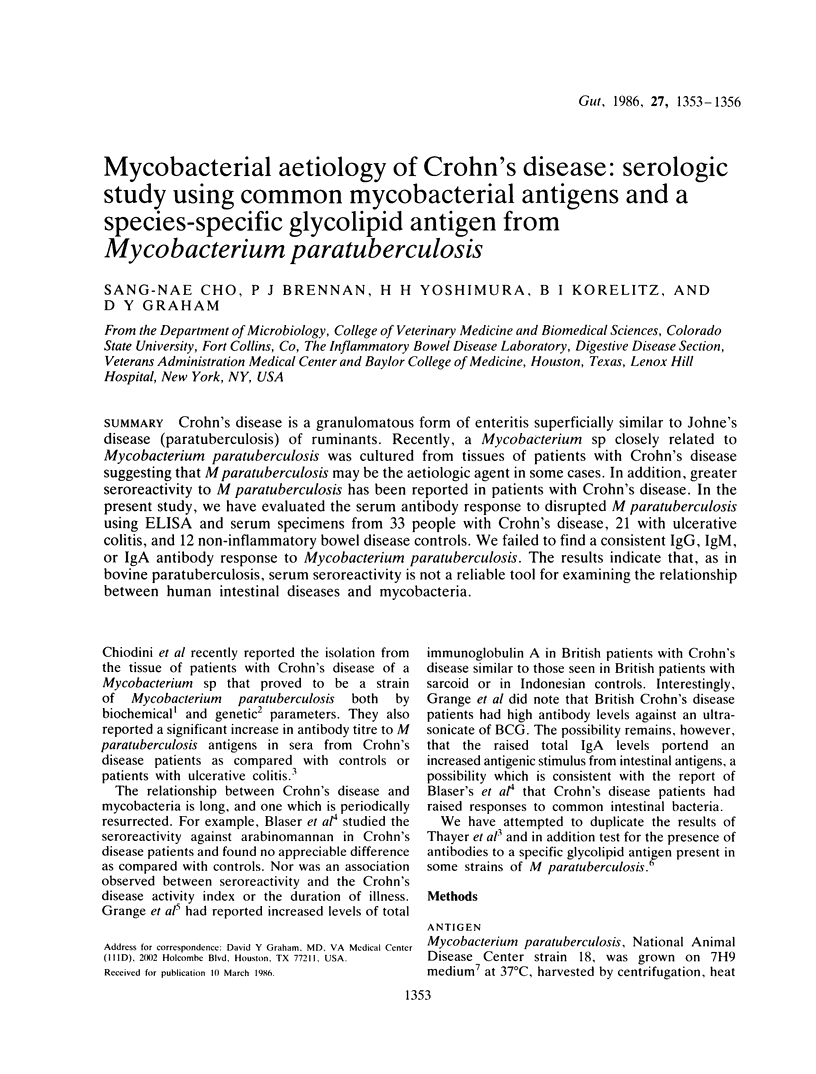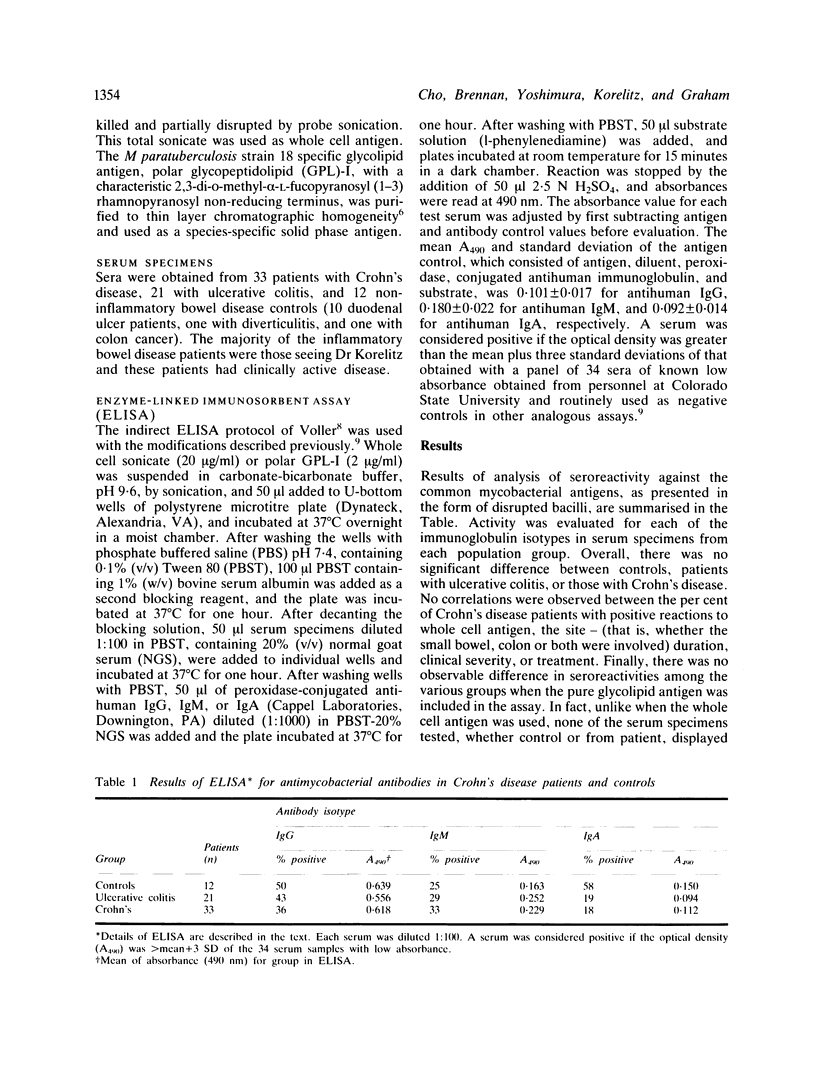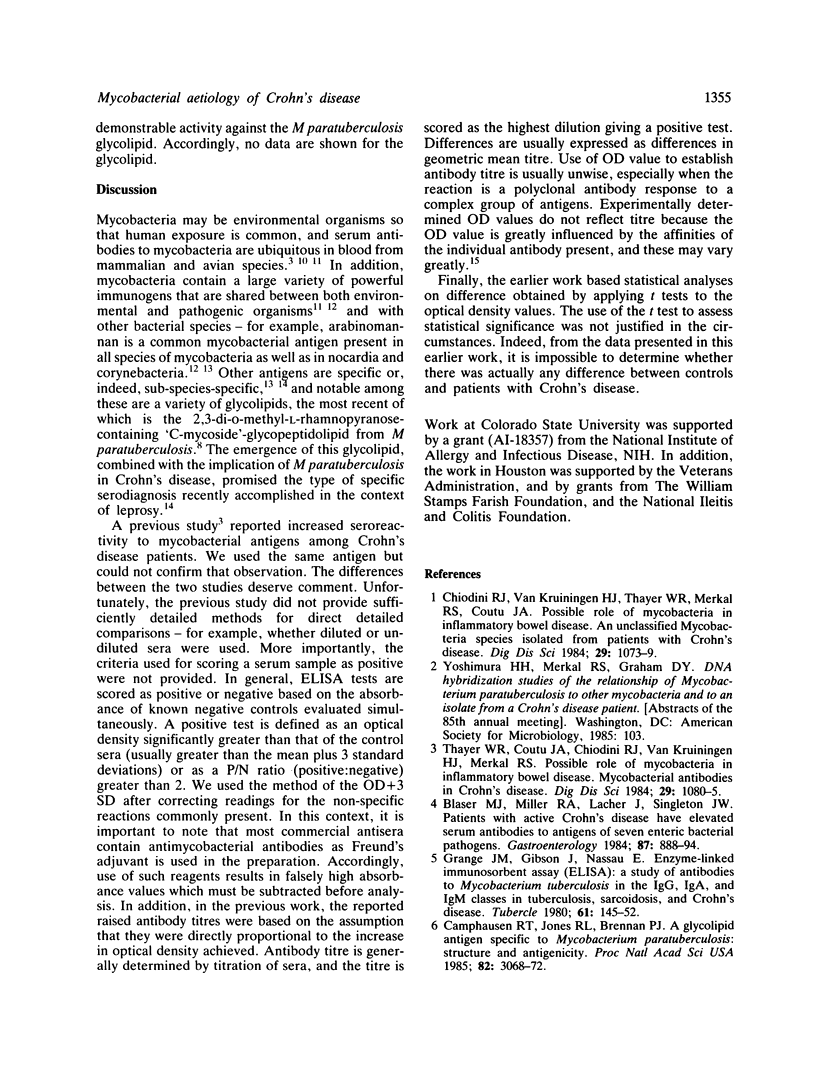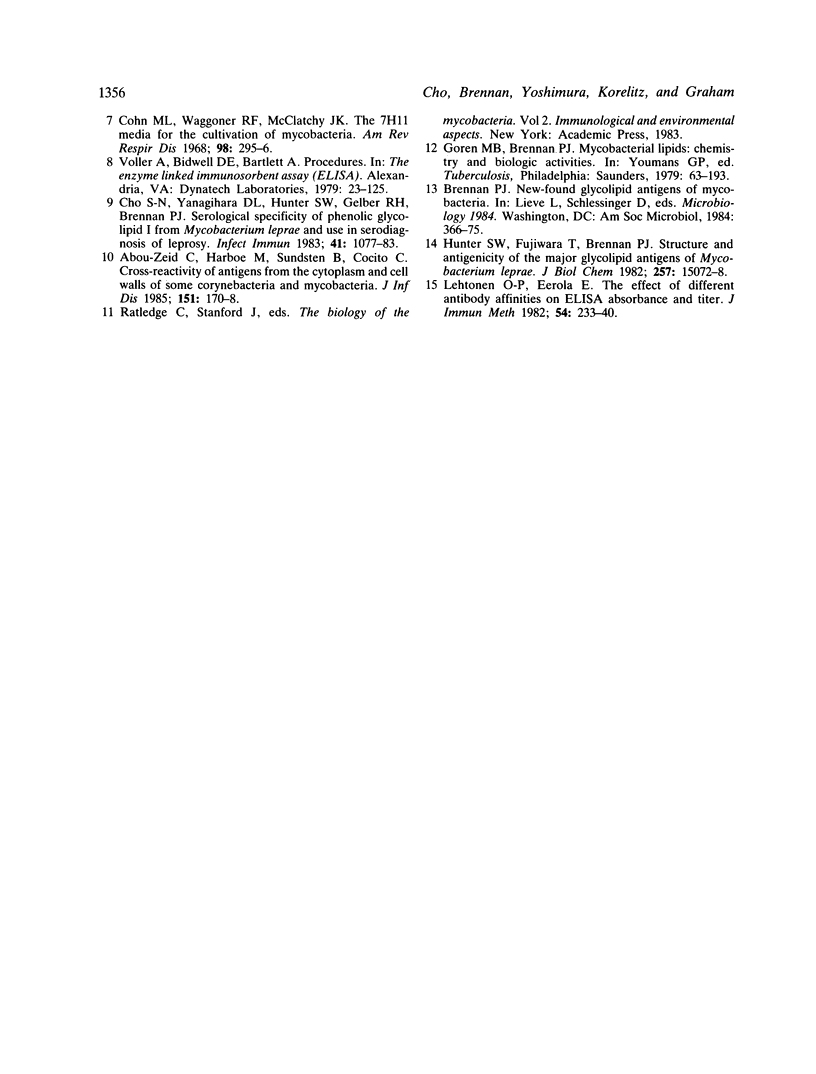Abstract
Crohn's disease is a granulomatous form of enteritis superficially similar to Johne's disease (paratuberculosis) of ruminants. Recently, a Mycobacterium sp closely related to Mycobacterium paratuberculosis was cultured from tissues of patients with Crohn's disease suggesting that M paratuberculosis may be the aetiologic agent in some cases. In addition, greater seroreactivity to M paratuberculosis has been reported in patients with Crohn's disease. In the present study, we have evaluated the serum antibody response to disrupted M paratuberculosis using ELISA and serum specimens from 33 people with Crohn's disease, 21 with ulcerative colitis, and 12 non-inflammatory bowel disease controls. We failed to find a consistent IgG, IgM, or IgA antibody response to Mycobacterium paratuberculosis. The results indicate that, as in bovine paratuberculosis, serum seroreactivity is not a reliable tool for examining the relationship between human intestinal disease and mycobacteria.
Full text
PDF



Selected References
These references are in PubMed. This may not be the complete list of references from this article.
- Abou-Zeid C., Harboe M., Sundsten B., Cocito C. Cross-reactivity of antigens from the cytoplasm and cell walls of some corynebacteria and mycobacteria. J Infect Dis. 1985 Jan;151(1):170–178. doi: 10.1093/infdis/151.1.170. [DOI] [PubMed] [Google Scholar]
- Blaser M. J., Miller R. A., Lacher J., Singleton J. W. Patients with active Crohn's disease have elevated serum antibodies to antigens of seven enteric bacterial pathogens. Gastroenterology. 1984 Oct;87(4):888–894. [PubMed] [Google Scholar]
- Camphausen R. T., Jones R. L., Brennan P. J. A glycolipid antigen specific to Mycobacterium paratuberculosis: structure and antigenicity. Proc Natl Acad Sci U S A. 1985 May;82(10):3068–3072. doi: 10.1073/pnas.82.10.3068. [DOI] [PMC free article] [PubMed] [Google Scholar]
- Chiodini R. J., Van Kruiningen H. J., Thayer W. R., Merkal R. S., Coutu J. A. Possible role of mycobacteria in inflammatory bowel disease. I. An unclassified Mycobacterium species isolated from patients with Crohn's disease. Dig Dis Sci. 1984 Dec;29(12):1073–1079. doi: 10.1007/BF01317078. [DOI] [PubMed] [Google Scholar]
- Cho S. N., Yanagihara D. L., Hunter S. W., Gelber R. H., Brennan P. J. Serological specificity of phenolic glycolipid I from Mycobacterium leprae and use in serodiagnosis of leprosy. Infect Immun. 1983 Sep;41(3):1077–1083. doi: 10.1128/iai.41.3.1077-1083.1983. [DOI] [PMC free article] [PubMed] [Google Scholar]
- Cohn M. L., Waggoner R. F., McClatchy J. K. The 7H11 medium for the cultivation of mycobacteria. Am Rev Respir Dis. 1968 Aug;98(2):295–296. doi: 10.1164/arrd.1968.98.2.295. [DOI] [PubMed] [Google Scholar]
- Grange J. M., Gibson J., Nassau E., Kardjito T. Enzyme-linked immunosorbent assay (ELISA): a study of antibodies to Mycobacterium tuberculosis in the IgG, IgA and IgM classes in tuberculosis, sarcoidosis and Crohn's disease. Tubercle. 1980 Sep;61(3):145–152. doi: 10.1016/0041-3879(80)90003-3. [DOI] [PubMed] [Google Scholar]
- Hunter S. W., Fujiwara T., Brennan P. J. Structure and antigenicity of the major specific glycolipid antigen of Mycobacterium leprae. J Biol Chem. 1982 Dec 25;257(24):15072–15078. [PubMed] [Google Scholar]
- Lehtonen O. P., Eerola E. The effect of different antibody affinities on ELISA absorbance and titer. J Immunol Methods. 1982 Oct 29;54(2):233–240. doi: 10.1016/0022-1759(82)90064-3. [DOI] [PubMed] [Google Scholar]
- Thayer W. R., Jr, Coutu J. A., Chiodini R. J., Van Kruiningen H. J., Merkal R. S. Possible role of mycobacteria in inflammatory bowel disease. II. Mycobacterial antibodies in Crohn's disease. Dig Dis Sci. 1984 Dec;29(12):1080–1085. doi: 10.1007/BF01317079. [DOI] [PubMed] [Google Scholar]


